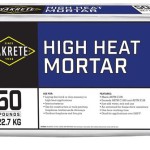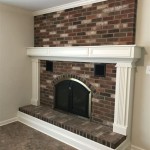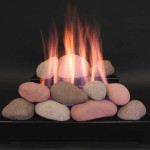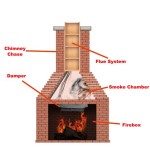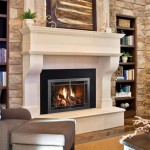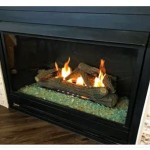Here's an article focusing on wood fireplace insert blower fans, tailored to your specifications:
Wood Fireplace Insert Blower Fans: Enhancing Heating Efficiency
Wood fireplace inserts offer an efficient and aesthetically pleasing alternative to traditional open fireplaces. However, their effectiveness in heating a space can be significantly improved with the addition of a blower fan. These fans, designed specifically for fireplace inserts, enhance heat circulation, distributing warmth more evenly throughout the room and potentially reducing heating costs. Understanding the function, benefits, and considerations when selecting a wood fireplace insert blower fan is crucial for optimizing the performance of the fireplace insert.
A wood fireplace insert blower fan works by drawing cool air from the room, circulating it around the firebox or heat exchanger of the insert, and then expelling the warmed air back into the room. This forced-air convection dramatically increases the transfer of heat compared to natural convection alone, where warm air rises and cooler air remains near the floor. The result is a more consistent and comfortable temperature distribution within the space.
Key Point 1: Improved Heat Distribution and Efficiency
The primary advantage of using a blower fan with a wood fireplace insert is the significant improvement in heat distribution. Without a fan, much of the heat generated by the fire rises directly up the chimney, providing limited warmth to the room itself. A blower fan disrupts this natural upward flow, forcing the heat to circulate horizontally. This process prevents heat from accumulating near the ceiling and ensures that warmth reaches the areas where it's needed most. The even temperature distribution that a blower fan provides can significantly reduce cold spots in a room and create a more comfortable living environment.
Furthermore, the increased heat distribution translates directly into improved heating efficiency. By circulating the warm air throughout the room, the thermostat, if connected to a central heating system, is more likely to register a satisfactory temperature sooner. This reduces the runtime of the primary heating system, leading to potential energy savings and lower heating bills. The extent of these savings depends on various factors, including the size of the room, the insulation of the home, and the frequency of fireplace use.
The location of the blower fan is also an important factor in heat distribution. Blower fans are typically located at the bottom of the fireplace insert, and they are designed to pull in cool air from near the floor and exhaust warm air upwards. The forced convection of air from the bottom of the insert helps to equalize the temperature in a room, and it prevents temperature stratification from occurring.
Key Point 2: Types of Blower Fans and Their Features
Blower fans for wood fireplace inserts come in various types, each with its own set of features and benefits. Some factors differentiate blower fans, including airflow capacity, noise level, speed control, and power source.
Airflow Capacity: Measured in cubic feet per minute (CFM), airflow capacity indicates the volume of air that the fan can move. A higher CFM rating generally means that the fan can circulate more air and heat a larger space more effectively. The appropriate CFM rating depends on the size of the room and the heat output of the fireplace insert.
Noise Level: Blower fans can produce varying levels of noise. Some models are designed with noise-dampening features to minimize operational sound. Look for fans with lower decibel (dB) ratings if noise is a concern. Variable-speed fans often allow users to reduce the fan speed, which in turn reduces the noise level.
Speed Control: Many blower fans offer variable speed control, allowing users to adjust the airflow according to their heating needs. This feature provides a degree of customization, enabling users to fine-tune the fan's performance for optimal comfort and energy efficiency. A rheostat or electronic control can adjust the fan's output, providing more granular control.
Power Source: Most blower fans for wood fireplace inserts are powered by standard AC electrical outlets. However, some models may require specific voltage or amperage requirements. It's crucial to ensure that the electrical outlet is compatible with the fan's specifications before installation.
Additionally, some blower fans include thermal sensors that automatically turn the fan on and off based on the temperature of the fireplace insert. This feature provides convenience and ensures that the fan operates only when it's needed, conserving energy and extending the lifespan of the fan motor. Before purchasing a blower fan, it is important to consider the fan's voltage, amperage, and wattage specifications, and it is important to check that the electrical outlet can handle these power requirements. Overloaded electrical outlets can create a fire hazard.
Key Point 3: Installation and Maintenance Considerations
Installing a blower fan for a wood fireplace insert is typically a straightforward process, but it's essential to follow the manufacturer's instructions carefully. In some cases, professional installation may be recommended, especially if electrical connections are involved that you are not familiar with. The insert may have specific slots or openings designed for the blower fan to attach to.
Before beginning the installation, ensure that the fireplace insert is cool and disconnected from the power source. Connect the blower fan to the designated location within the insert, following the wiring diagram provided. Secure the fan in place using the appropriate hardware. Ensure all connections are tight and secure before restoring power to the fireplace insert.
Regular maintenance is crucial for ensuring the longevity and optimal performance of the blower fan. Periodically inspect the fan for dust and debris buildup, which can obstruct airflow and reduce efficiency. Use a vacuum cleaner or compressed air to remove any accumulated dirt. Lubricate the fan motor according to the manufacturer's recommendations to prevent friction and ensure smooth operation. Clean the fan regularly to preserve peak performance.
If the blower fan begins to make unusual noises or fails to operate correctly, consult the manufacturer's troubleshooting guide. Replacing the blower fan may be necessary if the motor fails. By following proper installation and maintenance procedures, users can ensure that their wood fireplace insert blower fan provides years of reliable and efficient heating performance.

Fireplace Efficiency Blowers And Why You Should Have One

Enviro Boston Wood Insert Fan Blower 50 2390 Friendly Fires

Fireplace Blower Fans What You Need For Heat Full Service Chimney

Wood Fireplace Inserts With Blowers Upgrade Your

Oa10505 130 Cfm Blower Fan

Small Wood Stove Fan 4 Blade Fireplace For Burning Heat Powered Accessories Silent Operation Circulating Warm Air Non Electric Com

3 Blade Mini Fireplace Fan Furnace Air Blower For Wood Log Burner Eco Friendly Heat Powered Stove China Home Appliance Made In Com

How To Replace Your Rsf Fireplace Blower Fan

Wood Stove Fan Fireplace Heat Powered Non Electric For Log Burner Burning Quiet Motor Circulating Warm Air Saving Com

Fireplace Blowers Explained How Fans Work Regency

